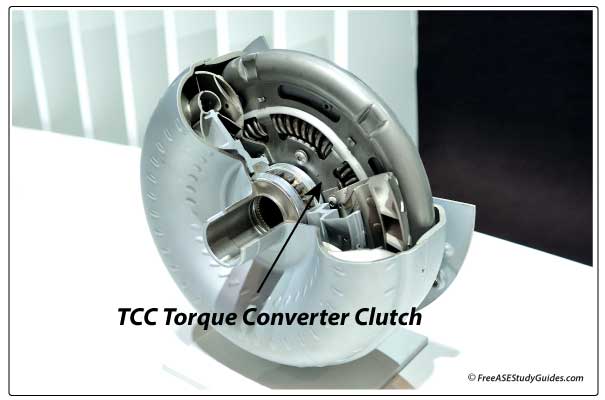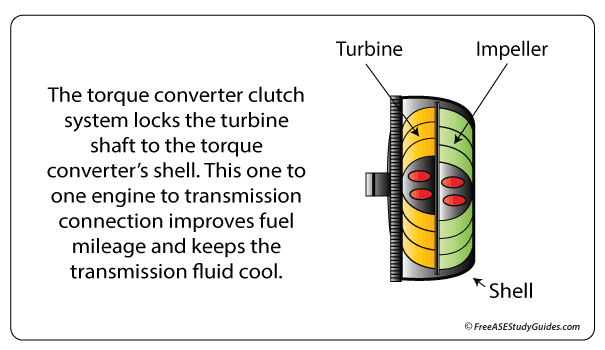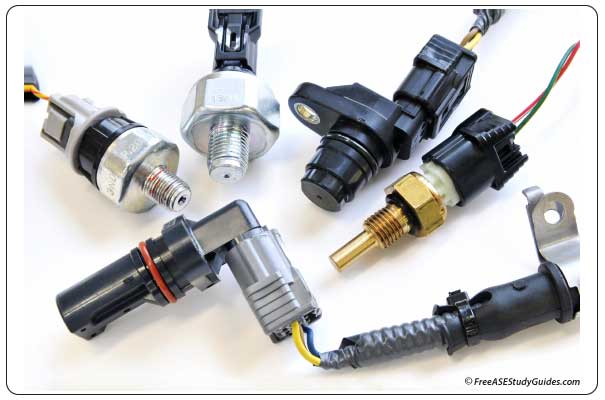Torque Converter Clutch

The (TCC) torque converter clutch creates a one-to-one connection between the engine and the transmission that increases fuel mileage and reduces transmission fluid temperatures. Slippage consumes power during the coupling phase. Locking the converter shell to the turbine shaft prevents this slippage from occurring.

The clutch is inside the torque converter case; it contains a friction material that locks the turbine shaft inside the torque converter's shell. The TCM sends a pulsed voltage signal to the TCC solenoid. The solenoid moves a valve that sends pressurized fluid to the clutch circuit, engaging the TCC. When the clutch is disengaged, the torque converter allows the engine to rotate without stalling. While the vehicle is slowing and approaching a stop, the TCC's application is undesirable. Like the clutch on a manual transmission, it causes the engine to stall.
The clutch plate contains a return spring and hydraulically controlled pistons. The pistons move the clutch disk into contact with the shell, providing a 1:1 mechanical connection. It's only engaged at certain times, depending on conditions like speed and temperature. The TCM makes these decisions based on input from various sensors. It compares the information to factory preset tables before engaging or disengaging the TCC.
Automatic Transmission Input Sensors

The ECT sensor monitors engine coolant temperature. The TCM delays the engagement of the TCC until the engine reaches a preset temperature.
The MAF sensor monitors the volume of air passing through the air tube. The TCM disengages the TCC while the engine is accelerating. Most transmissions disengage the TCC during deceleration to prevent high emissions.
The TP sensor indicates the throttle plate angle. If the driver accelerates to wide-open throttle, the TCM disengages the TCC to downshift.
The TCM uses the brake switch signal is to disengage the TCC when the vehicle slows or comes to a stop.
The TFT monitors transmission fluid temperature. The TCM uses this information to engage or disengage the TCC according to transmission fluid temperatures.